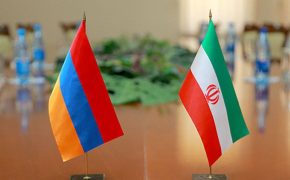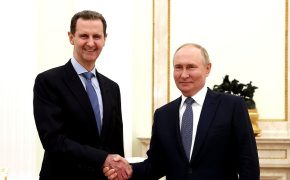The peace agreement between Azerbaijan and Armenia; Who is the winner of this conflict?


Late on November 9, Azerbaijan and Armenia announced a new ceasefire and a lasting peace agreement in Nagorno-Karabakh mediated by Russia; A peace agreement that raised many questions and ambiguities, but who will be the winner of this conflict ?!
Prior to the agreement, three other ceasefires had been announced in Nagorno-Karabakh, which none of them lasted. But Russia’s more serious entry as a major player in the Fourth ceasefire ended the fragile agreements and ceasefires in the Nagorno-Karabakh.
The Azerbaijan-Armenia peace agreement has nine main clauses and is summarized as follows:
1- Complete cessation of clashes and stop in the current positions
2- Delivery of Agdam region to Azerbaijan
3 and 4 – Deployment of Russian forces in Nagorno-Karabakh
5- Establishing a center to monitor the implementation of the agreement
6- Delivery of Kalbajar and Lachin regions to Azerbaijan
7- Return of refugees to Karabakh
8- Exchange of prisoners and corpses
9- Establishing a transit corridor between western areas of Azerbaijan and Nakhchivan region
At first glance, this agreement may seem like a complete victory for Azerbaijan and a defeat for Armenia, or at least Azerbaijan has achieved what it wanted from Nagorno-Karabakh. However, with a further examination of this agreement and the deployment of Russian forces in the Nagorno-Karabakh region, many questions and ambiguities arise about the fate of this region, which we will examine on a map to better understand this agreement.
– Green hached are regions that scheduled to be returned to the Republic of Azerbaijan within a certain period of time. The Kalbajar region will be handed over to the Republic of Azerbaijan by November 15, the Agdam region by November 20, the Lachin region and the occupied territories of Gazakh by December December 1.
The important point about this issue is that “not” all the districts(Rayons) of Agdam, Kalbajar and Lachin, but also the areas that were occupied by the Armenian forces outside the “Nagorno-Karabakh Autonomous Region” will be returned to Azerbaijan. For example, the eastern half of Rayon Kalbajar is located in the “Nagorno-Karabakh Autonomous Oblast” and these areas will remain under the control of Armenian forces and only the western half of Kalbajar will be handed over to Azerbaijan. The same is true about a small part of western areas of Aqdam Rayon too. In other words, the “Nagorno-Karabakh Autonomous Oblast” mechanism is still in place in these areas.
Regarding the two occupied points in the Gazakh region in northwestern Azerbaijan, it is noteworthy that despite the agreement to return the two points to the Republic of Azerbaijan, the next statement issued by Russia does not mention the status of these two points. And how to solve this issue is unknown. It is said that the original text of the agreement has been leaked and in the next version, which is the original version, this part has been modified and deleted.
– Blue hached are areas where 1,960 Russian peacekeepers with 90 armored vehicles and 380 vehicles and special equipment will be stationed.
If we look closely at the deployment of Russian forces in the Nagorno-Karabakh region, it is quite clear that these forces will be stationed exactly inside and on the borders of the “Nagorno-Karabakh Autonomous Oblast.” This means that in fact the “Nagorno-Karabakh Autonomous” will be recognized for Armenia and will remain in the possession of Armenian forces. Although this issue is not mentioned in the text of the agreement, but in practice it will mean that.
In addition to this issue, it should be added that: The text of the agreement states that the Russian peacekeeping forces will remain in the region for 5 years, and if there is no particular problem, this 5-year period will be extended for another 5 years. And these courses will continue indefinitely. Clearly, this also confirms and extends the survival of autonomy in Nagorno-Karabakh.
Nonetheless, these areas are separate from the areas captured by the Azerbaijani army during the recent operation in the Nagorno-Karabakh region.
If we look closely at the southern regions of Karabakh, and especially the southern regions of the “Nagorno-Karabakh Autonomous Oblast”, it is clear that the Azerbaijani forces have taken control of a small part of the southern “Nagorno-Karabakh Autonomous Oblast” and most of the achievements are in areas occupied by Armenian forces outside the “Nagorno-Karabakh Autonomous Oblast.”
– On the map, the progress of Azerbaijan army in the Nagorno-Karabakh region is shown in yellow.
Obviously, this is a very good victory because the Republic of Azerbaijan has been able to liberate almost all the southern regions of Karabakh, but on the other hand, this should not be too bad for Armenia either; Because in general, the areas around the “Nagorno-Karabakh Autonomous Oblast”, both in the north and in the south of Karabakh, are officially and internationally part of the territory of Azerbaijan, and the Armenian forces, which occupied the areas around the “Nagorno-Karabakh Autonomous Oblast” in the last 28 yeasr, are now giving the lands to its owner in the south by military force, and in the north by the recent agreement.
Therefore, Armenia can consider the occupied territories around the “Nagorno-Karabakh Autonomous Oblast” as a negotiating card, which it is now handing over, and in return will take over most of the “Nagorno-Karabakh Autonomous Oblast” region.
The Republic of Azerbaijan has also achieved its goal to return the 7 occupied cities of Karabakh. Nevertheless, it is worth mentioning that Azerbaijan demands all of Nagorno-Karabakh, and with the current situation and the field conditions, this issue has not been achieved.
Because most of the “Nagorno-Karabakh Autonomous Oblast” with the support of Russia remains under the control of Armenian forces for an indefinite period of time.
Another important issue that should be considered is Russia’s opposition to the presence of Turkish forces in Nagorno-Karabakh. The President of Azerbaijan stated in a televised speech on the agreement to end the war in Nagorno-Karabakh that, in addition to the Russian peacekeeping forces, the Turkish peacekeeping forces will also be stationed in Nagorno-Karabakh. But the Kremlin said in a statement that the issue was not mentioned in the agreement and that the leaders of Russia, Armenia and Azerbaijan had not agreed on the deployment of Turkish troops in the Nagorno-Karabakh region. According to the statement, the presence of Turkish troops in the Nagorno-Karabakh region is virtually rejected, and this implicitly confirms Russia’s support for the continuation of autonomy in the remaining areas of the “Nagorno-Karabakh Autonomous Oblast.”
In general, the presence of Turkish forces in Nagorno-Karabakh or direct land links between Turkey and the Republic of Azerbaijan is a strategic threat to Russia, a threat that reduces Russia’s influence and hegemony in the Caucasus and the Caspian Sea and then in Central Asia. In other words.it will increase Turkey’s power and influence in the region; This is definitely against the wishes and policy of Russia. Therefore, Russia is trying to prevent this from happening.
Russia’s opposition to the official deployment of Turkish forces in Nagorno-Karabakh can be interpreted from this perspective.
– Another important issue is the establishment of a new transit and transportation route between Stepanakert and Armenia along the Lachin corridor for three years, as well as the establishment of a safe transit route between the west of the Republic of Azerbaijan and the Nakhchivan region through Armenia. These routes also will be secured by Russian FSB forces.
Comparing these two routes, it can be concluded that Armenia provides Azerbaijan with a safe transportation route in exchange for a safe transportation route to Stepanakert. This also means that Azerbaijan implicitly accepts the autonomy of Nagorno-Karabakh in exchange for Azerbaijan’s direct connection to the Nakhchivan region.
On the map, the new transit and transportation route between Stepanakert and Armenia has been marked with a red arrow and the possible communication route between Azerbaijan and Nakhchivan has been marked with a yellow arrow. Nonetheless, there is a railroad in the south of Armenia and near the borders of Iran, the use of which can also be on the agenda.
– Another important issue is the return of refugees to Nagorno-Karabakh. During the Karabakh war, Azeri residents in various parts of Karabakh, including Khojaly, were driven out of the “Nagorno-Karabakh Autonomous Oblast” or Armenians expelled from the southern part of Nagorno-Karabakh, such as Hadrut, during the last two months of fighting; The mechanism for the return of the displaced persons is not explicitly mentioned in the agreement, and so far none of the officials of the parties have commented on it. The city of Shusha is an example of this problem; Shusha is now under the control of the Republic of Azerbaijan, and if this clause of the agreement is to be implemented, Armenians and Azeris must be present together in Shusha, which seems impossible in the current situation.
In general, this agreement, beyond what the parties claim is neither an absolute victory nor an absolute defeat Rather, so far each side has achieved a certain amount of its own goals; The difference is that Azerbaijan has achieved somewhat slightly more than Armenia.
The Republic of Azerbaijan acquired the territories around the “Nagorno-Karabakh Autonomous Oblast” (plus parts of the south of the “Nagorno-Karabakh Autonomous Oblast”) after 28 years. On the other hand, Armenia gained autonomy (at least nominally) and a presence in the “Nagorno-Karabakh Autonomous Oblast”.
The Republic of Azerbaijan achieved a direct land route with the Nakhchivan region, and on the opposite side of Armenia achieved a direct land route to the center of the “Nagorno-Karabakh Autonomous Oblast”, the city of Stepanakert.
Regarding the future of the Nagorno-Karabakh region, according to the existing agreement, there are many issues and ambiguities that are not mentioned at least in the text of the contract, and this issue will be problematic in the future and will bring an uncertain future for Nagorno-Karabakh. At present, with Russia’s direct entry into Nagorno-Karabakh, its influence and pressure on the region has increased, and on the other hand, important political developments are taking place in Armenia, and the lines of contact and conflict will always be a place for escalating tensions. Anything is possible in the future, just as Azerbaijan recaptured Nagorno-Karabakh after 28 years of renewal, it is not unlikely that Armenia will pursue a similar policy towards Azerbaijan, or even the odds prepare conditions for the continuation of the Azerbaijani army operation in Nagorno-Karabakh.
And the Karabakh conflict is still continue…





Comment